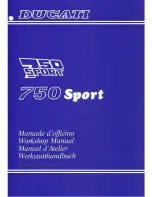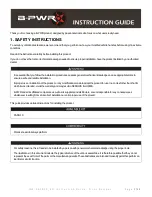
Periodic maintenance and adjustment
10-8
1
2
3
4
5
6
7
8
9
10
11
12
13
Tires age, even if they have not been
used or have only been used occasion-
ally. Cracking of the tread and sidewall
rubber, sometimes accompanied by
carcass deformation, is an evidence of
ageing. Old and aged tires shall be
checked by tire specialists to ascertain
their suitability for further use.
WARNING
EWA21531
The front and rear tires should
be of the same make and de-
sign, otherwise the handling
characteristics of the motorcy-
cle may be different, which
could lead to an accident.
Always make sure that the valve
caps are securely installed to
prevent air pressure leakage.
Use only the tire valves and
valve cores listed below to
avoid tire deflation during a ride.
The rear tire air valve original
position is with the valve cap
pointing to the left side of the
vehicle, perpendicular (90 de-
gree left angle) to the axis (cen-
ter line) of the wheel. If the tire
air valve becomes misaligned,
do not twist it back to its original
position by yourself. Otherwise,
leakage may occur. Have a
Yamaha dealer inspect the
valve.
After extensive tests, only the tires list-
ed below have been approved for this
model by Yamaha.
EAU21963
Cast wheels
To maximize the performance, durabil-
ity, and safe operation of your vehicle,
note the following points regarding the
specified wheels.
The wheel rims should be checked
for cracks, bends, warpage or oth-
er damage before each ride. If any
damage is found, have a Yamaha
dealer replace the wheel. Do not
attempt even the smallest repair to
the wheel. A deformed or cracked
wheel must be replaced.
The wheel should be balanced
whenever either the tire or wheel
has been changed or replaced. An
unbalanced wheel can result in
poor performance, adverse han-
dling characteristics, and a short-
ened tire life.
Front tire:
Size:
110-70-13M/C 48P
Manufacturer/model:
MAXXIS/MA-EVF
Rear tire:
Size:
130-70-13M/C 63P
Manufacturer/model:
MAXXIS/MA-EVR
Tire air valve:
PVR251
BFM-F8199-E0.book 8 ページ 2022年2月4日 金曜日 午後4時11分
















































